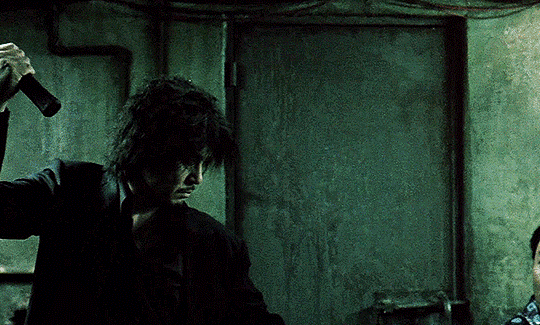 |
| got to pay my respects to one of the all time misery men at the oldboy restoration a few weeks ago |
 |
| this is you, writhing in shame because you haven't seen Demon Queen (1987) |
sorry gang but y'all have been in a trolly problem with your asses looking gormlessly at the streetcar fast approaching on one track and "playing games and making art with my loved ones" on the other and i am not EVER touching that lever. you'll be fine those things get up to like 20 miles an hour. and hey, look, here's a post to tell you how to handle your newly mangled body.
so this was mainly the result of me looking for an in-depth injury table to steal, specifically one that limited in-fiction action rather than assigning penalties. mostly though people seem to be doing the "one two three strikes you're out" for like. arms and legs and if you get hit in the head or body it's a big problem critical crisis kinda deal. which is frankly what i do be doing as well MOST of the time but i want things to be more drawn out and painful and messy this time for reasons of a game that you'll be graced with soonish
i think it's good to define character's limitations as like inverse capabilities, defined only once they afflict. You don't need to track grip strength and then apply a penalty to it when you lose a finger, but a character being unable to grab shit provides good tension that makes player decisions more complex and specific. Besides, taking your body for granted until a part of it doesn't work anymore is a relationship most of us are pretty familiar with.
kinda missed the boat on Δ and why it's so important for me to use the insert special character function when i'm talking about like fiction first mechanics but this is sort of for y'all, I guess.


I badly want tbwkwuibutwotk to be a real word and to know more about the culture from which it comes.
ReplyDeleteYes yes! Each hit point is an action you can no longer take. But I am just thinking of all the fun that could be had. What if arms can no longer resist subconscious desire? What if head can no longer support empathy? What if foot can no longer resist dancing to rhythmic percussion. What if head can no longer tell the difference between left and right, or it can no longer count above 5. And I say why not make a whole ass table with ten million entries and each character is just a bunch of these entries, which defines how they react to injury! All I'm saying is Screwhead logic anyway, why not Screw this in a bit more I say!
ReplyDeleteThannks great blog
ReplyDelete